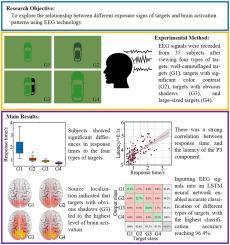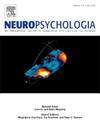Neural responses to camouflage targets with different exposure signs based on EEG
Abstract
This study investigates the relationship between various target exposure signs and brain activation patterns by analyzing the EEG signals of 35 subjects observing four types of targets: well-camouflaged, with large color differences, with shadows, and of large size. Through ERP analysis and source localization, we have established that different exposure signs elicit distinct brain activation patterns. The ERP analysis revealed a strong correlation between the latency of the P300 component and the visibility of the exposure signs. Furthermore, our source localization findings indicate that exposure signs alter the current density distribution within the cortex, with shadows causing significantly higher activation in the frontal lobe compared to other conditions. The study also uncovered a pronounced right-brain laterality in subjects during target identification. By employing an LSTM neural network, we successfully differentiated EEG signals triggered by various exposure signs, achieving a classification accuracy of up to 96.4%. These results not only suggest that analyzing the P300 latency and cortical current distribution can differentiate the degree of visibility of target exposure signs, but also demonstrate the potential of using EEG characteristics to identify key exposure signs in camouflaged targets. This provides crucial insights for developing auxiliary camouflage strategies.


 求助内容:
求助内容: 应助结果提醒方式:
应助结果提醒方式:


